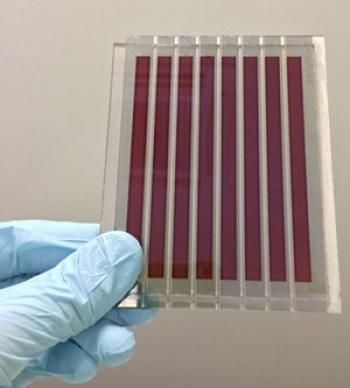Researchers involved in the 10.6 million Euro European research project called GRAFOL have reportedly demonstrated a cost-effective roll-to-roll production tool capable of making large sheets of graphene on an industrial scale. The tool operates at atmospheric pressure and at reduced operating temperature, and is proclaimed by the researchers "the best route to low-cost manufacture".

Graphene-enhanced perovskite PV
The project team also believes that graphene could be used as a substitute for transparent indium tin oxide (ITO) electrodes used in organic LEDs (OLEDs), enabling flexible designs while helping reduce dependency on ITO. In addition, the team showed that it is possible to adapt the CVD method to grow graphene on 300 mm-diameter silicon wafers the standard size currently used in the semiconductor industry. That suggests the potential to integrate graphene in silicon photonics platforms, as well as flexible thin-film solar cells with transparent electrodes (like perovskite PVs, for example).
Some challenges remain, however, before graphene can become part of a commercial large-scale device manufacturing process, since applying graphene to various other substrates still requires a problematic transfer process and a large-scale commercial demonstration of this step is required.
Major companies were involved in this project, like Aixtron, Intel, Philips, Thales and more, which also aim to take the project results to the next level by introducing new products in the market. Also, Graphenea were the graphene producer of this project, and named as one of the companies likely to benefit from its results.
In July 2014, researchers from Philips, Graphenea and the University of Cambridge developed a monochrome OLED device that uses graphene as the transparent conductor layer, as part of project GRAFOL. In June 2015, also under the same project, Graphenea introduced large area monolayer graphene suspended over microcavities, that can be used for NEMS.